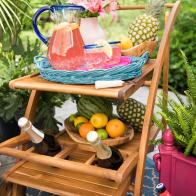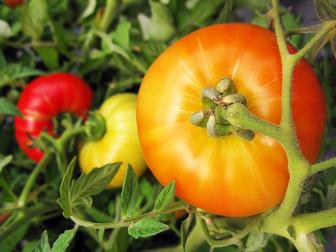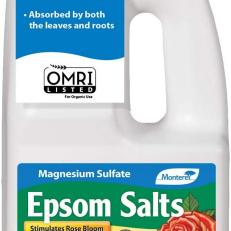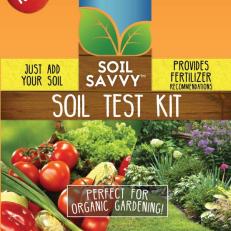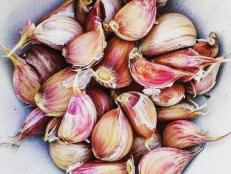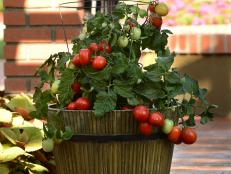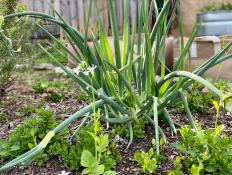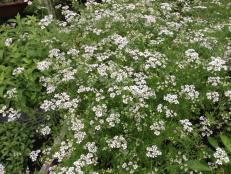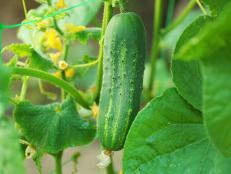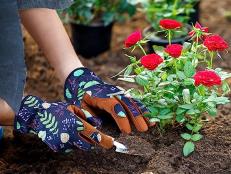Why Are My Tomato Leaves Turning Yellow?
Tomato leaf discoloration can be caused by a number of factors, including nutrient deficiencies, plant diseases and cultural problems. We’ll help you narrow down the cause of yellowing leaves on your tomato plants and find solutions to help.

Tomatoes are one of the most beloved crops for home gardeners, including beginners, yet also one of the most troublesome. They can play host to a number of pests and diseases, and their nutrition requirements are sizable, which is why they’re considered “heavy feeders.” Yellowing leaves on tomato plants can be a sign of many different problems, from nitrogen deficiency to underwatering to herbicide damage, but don’t panic — yellow leaves are extremely common with lots of potential solutions.
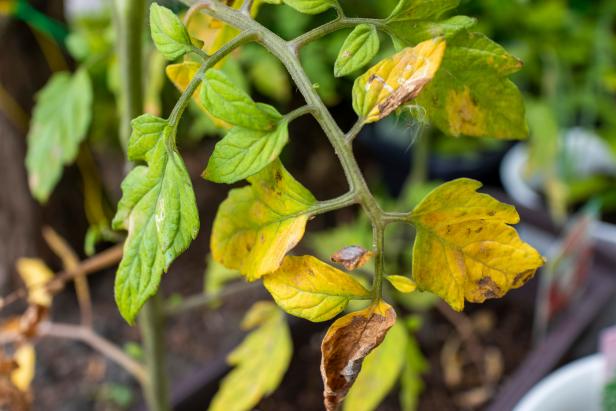
Shutterstock/Loveshiba
Some Yellow is Common with New Plants
If your newly purchased tomatoes have some yellow foliage, don’t worry, especially if they were tall and gangly plants growing in a small pot before you planted them in their new home in your vegetable garden. Yellow growth is a common problem for some nursery-grown vegetable plants, either due to competition from neighboring plants or because of dwindling nutrient levels in the potting mix.
Here's Why
Nurseries need to pack tomato seedlings close together to maximize the space available for growing plants. As those tomato sprouts inch toward the sky, their lower leaves become shaded by neighboring plants. When less sunlight reaches those lower leaves, they may turn yellow and even fall off. Once that plant is properly spaced and growing in its new home in the vegetable garden, yellow leaves will probably be less of an issue.
How to Plant, Grow and Care for Tomatoes
Consider this your ultimate guide to choosing tomato plants, planting, growing and caring for tomatoes, and harvesting the best-tasting tomatoes ever.
Although the garden center probably made sure there was plenty of fertilizer mixed in with the tomato seedling’s potting mix, that hungry young plant may have depleted some of those nutrients resulting in yellowing leaves. The good news is that garden soil is usually rich in minerals that tomato plants need to grow — especially if there’s a good amount of organic matter from compost, manure or decomposing mulch. Give your tomatoes a week or two to send roots into your garden’s native soil. Of course, it’s always a good idea to do a quick soil test to find out what nutrients are available to your veggies and how much fertilizer should be added to maximize growth.
Be Sure to Buy Healthy Plants
With that said, yellow foliage can also be a symptom of other health issues, including contagious plant diseases. When purchasing tomato plants from your local garden center, look for healthy plants that have stocky growth and green leaves free of spots or yellowing. Unhealthy bargain plants can introduce pest and disease problems that can take years to eliminate from the garden.
Nutrient Deficiency is a Likely Cause
The most common reason why the leaves on established tomato plants turn yellow is a lack of nutrients in the soil. Tomatoes are extremely heavy feeders and require plenty of nutrients to grow healthy and be fruitful.

Shutterstock/Mironmax Studio
Signs of nutrient deficiency often start low on the tomato plant.
Although a lack of nitrogen is usually the reason why tomato leaves are yellow, it’s important to correctly identify which nutrient is deficient before reaching for a high-nitrogen fertilizer. An excess of some nutrients can create a deficiency in others. To determine exactly what nutrients your tomatoes need, identify where the yellow leaves are on the plant and which parts of the leaves are yellowing, and run a quick soil test to determine exactly what nutrient your tomatoes need.
Are the Plant’s Older Leaves Turning Yellow?
Symptoms of some nutrient deficiencies will show up in the older leaves that are lower down on the plant. This means that the tomato was able to move nutrients from older growth to new leaves that need those minerals the most. Nitrogen, potassium and magnesium deficiencies can cause older leaves to turn yellow.
- In the case of nitrogen deficiency, the entire leaf will yellow. Although tomatoes (like all plants) need nitrogen to grow, it’s important not to be heavy-handed with the nitrogen fertilizer. Too much nitrogen will promote more lush vegetative growth while sacrificing flower and fruit production.
- A lack of potassium will cause the outer edge of the leaf to yellow before turning brown and looking burned. A good dose of potassium, either in the form of added fertilizer or what’s already available in the native soil, is key to tomato fruit quality and yield.
- Tomatoes that don’t have enough magnesium will develop yellow leaves with green veins. If you’re sure of a magnesium deficiency, try a homemade Epsom salt mixture. Combine two tablespoons of Epsom salt with a gallon of water and spray the mixture on the plant. If the problem was truly due to magnesium deficiency, leaves should start to become green within a week of treatment.
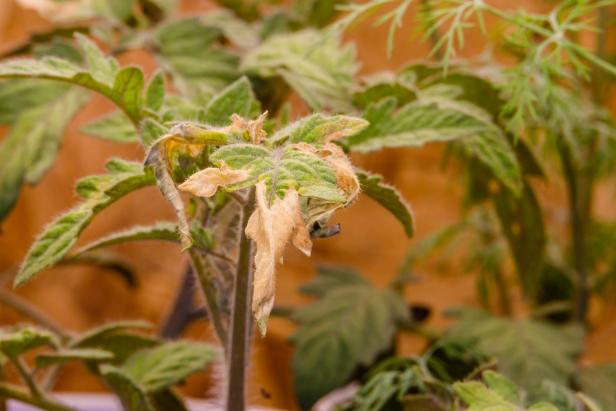
Shutterstock/Aaron J Hil
The yellowing of the outer edge of these tomato leaves could indicate a potassium deficiency.
Are the Newer Leaves Turning Yellow?
Not all nutrients are mobile in plants. Some nutrient deficiencies will be evident in new growth at the tips of branches and toward the top of the plant. Calcium and iron deficiency can cause younger leaves to turn yellow.
- In addition to yellow leaves, calcium deficiency can also lead to blossom end rot, where the bottoms of tomato fruits develop large brown or black spots.
- A lack of iron will cause tomatoes to develop yellow leaves with green veins.
First Soil Test, Then Fertilize
Before reaching for the fertilizer, do a quick soil test. The test results will include the amount of nutrients that are in the soil, the soil pH level, and recommendations on what products should be added. Most fertilizers that are developed specifically for tomatoes or vegetable gardens should include nutrients responsible for yellow foliage.
The pH level is important because it plays a role in nutrient availability. If the soil is too acidic, plants will have a hard time absorbing calcium and magnesium. On the other hand, alkaline soil limits the amount of iron that plants can absorb. Tomatoes grow best in soil with a 6.5 pH.
Shop Tomato Helpers
Diseases and Pests
Tomatoes are susceptible to a host of diseases and pests, many of which can cause leaves to turn yellow. If you suspect that your tomato plant has a bacterial or fungal disease or is being eaten by insects or mites, reach out to your local agricultural extension service for help diagnosing the problem and finding a solution. Your state extension program may have information on their website about tomato health problems that are common in your area. For example, the University of Clemson’s Home & Garden Information Center has an entire page dedicated to tomato diseases and disorders.
Cultural Problems
Water Consistently
Plants absorb nutrients through their roots along with water. Water carries these key nutrients into and through the plant to where they are needed most. This means that even in fertile soil, your tomatoes may show signs of nutrient deficiency if they aren’t getting enough water. Tomatoes need about an inch of water a week early in the growing season and two inches a week when they begin fruiting.
Rather than watering a little bit every day, water deeply twice a week (depending on the weather), allowing water to penetrate about a foot into the soil. If you’re using a watering wand hose attachment or a watering can, thoroughly water the soil around the base of the plant. When water begins to runoff or roll away, pause to allow all the water to percolate into the soil. When there’s no standing water left, give the plant another good drink. Or, try using a soaker hose to deliver water at a slow drip.
Deep and infrequent watering is a great way to train tomato roots to grow far down into the soil. This practice will make plants more resilient to stress, and the widespread root system will have an easier time finding nutrients in the soil. Consistency is key when it comes to watering tomatoes — especially when fruit begins to develop. Fruits that crack open or develop blossom end rot are signs of over- and under-watering.
Prevent Fertilizer Burn
When it’s time to fertilize your plants, always be sure to follow the directions on the product label. This will ensure that your plants get the nutrients they need with limited fertilizer runoff or damage to your crops. If the label calls for “sidedressing,” that means the fertilizer should be applied next to rather than directly on the plants — usually 4 to 6 inches away from the plants themselves.
Too much of a good thing can actually create problems, and this is certainly true in the case of fertilizers. Adding more fertilizer than the label specifies (either too much at one time or applying too frequently) can burn tomato roots. If you’re growing tomatoes in containers, fertilizers and other salts in the water can build up in the pot, leading to salt injury or fertilizer burn. Water thoroughly until water drains from the holes at the bottom of the pot to wash away excess salts.
Avoid Herbicides
Controlling weeds is an ongoing chore for vegetable gardeners everywhere. Although it can be tempting to reach for an herbicide (synthetic, organic or homemade), it’s important to keep in mind that tomatoes are incredibly sensitive to chemical weed control. Even if herbicides aren’t applied directly to tomato plants, herbicide drift can damage plants, resulting in stunted yellow growth. Rather than turning to herbicides, manage weeds in the vegetable garden with hand weeding, mulching and spacing plants closely enough to limit weed competition.
How Far Apart Should Tomatoes Be Planted?
Tomato plant spacing depends on a few factors, including the variety type and the type of garden. Follow our advice and you'll be spacing for success.
Look Out for Sunscald
Tomato leaves are susceptible to sunburn, given the right conditions. Sunscald is common on newly planted tomatoes early in the season — especially if the seedlings are used to growing indoors under a grow light. "Hardening off" is an important way to acclimate veggie seedlings before planting out into the garden.
Start the hardening off process about two weeks before you plan on planting your tomatoes in the garden. Simply set potted seedlings in a shady spot outdoors and bring them in at night. If temperatures dip below 45 degrees Fahrenheit, wait until the weather improves before continuing hardening off.
If you plan on purchasing your tomato seedlings from a garden center, protect your plants from sunscald on the ride home. Avoid leaving plants in the car for long periods of time, and try to make the plant nursery your last stop before going home. Don’t let tomato leaves press up against the car window if at all possible.
Sunburn is possible on mature, established plants, too — especially as summer days heat up. Tomatoes that are growing on exposed west- and south-facing sites, or are sited near a reflective surface like a block wall, may grow better with some protection from a shade cloth.
Go Easy on the Organic Matter
While it’s rare, another cultural problem causing leaves to yellow is too much organic matter, such as leaves or sawdust being used as soil amendments. In these cases, the abundance of carbon material can rob the soil of nitrogen that could be feeding your tomato plants. It’s especially troublesome if the amendments aren’t incorporated into the soil properly, so be mindful about ratios and proper mixing when adding organic matter to your soil.

%20Taniya%20Nayak,%20Ty%20Pennington,%20Alison%20Victoria,%20and%20Brian%20and%20Sarah%20Baeumler_BOTB_HGTV%20.jpg.rend.hgtvcom.196.196.suffix/1683310636672.jpeg)


